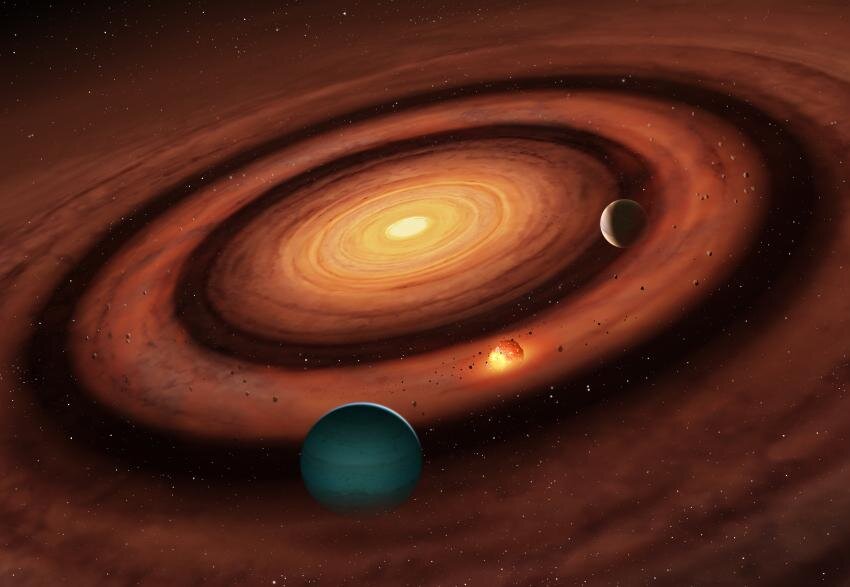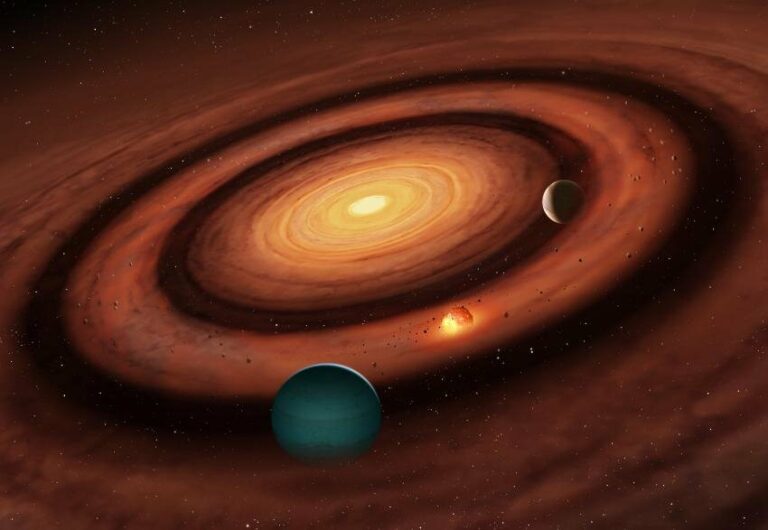‘Layered’ Revelation Provides a Fresh Perspective on the Origin of Planets
Researchers at the University of Warwick have unveiled a novel insight into the formation of small planets, challenging existing theories. Their investigation delves into the “birth environment” of planets, specifically the protoplanetary disk—a region of gas and dust encircling a central star.
The study introduces a previously unexplored method of planet formation within this region, termed “sandwiched planet formation,” showcasing how two sizable planets in the protoplanetary disk can potentially give rise to a smaller planet between them.
The mechanism behind this phenomenon lies in the constraint imposed by the two larger planets on the inward flow of dust, diminishing the amount of dust accumulating between them compared to a scenario without an outer planet. If this dust were to coalesce into a planet, the middle planet would likely be smaller than its outer counterparts, resembling the filling of a sandwich.
While further research is required to substantiate this theory, it could offer a plausible explanation for the formation of small planets, such as Mars and Uranus, each surrounded by larger planets. Associate Professor Farzana Meru, from the University of Warwick’s Department of Physics, emphasized the significance of addressing the intriguing question posed by the observed rings and gaps in protoplanetary disks. The findings have been submitted to the journal Monthly Notices of the Royal Astronomical Society and are being presented at the National Astronomy Meeting.

“In our investigation, we posit the rings as potential sites for planet formation, specifically proposing the existence of sandwiched planets currently undergoing formation within these ring structures. This concept diverges significantly from the conventional perspective on planet formation, where the prevailing expectation is that planets form sequentially from the inner to outer regions of the disk, with increasing mass farther out.
What adds a layer of intrigue is the discovery of examples, through exoplanet observations, that exhibit this sandwiched planet architecture—where the intermediate planet is less massive than its neighboring counterparts, constituting a notable proportion of the systems.
“The field of planet formation has experienced a recent revolution, marked by the emergence of high-resolution images of planet-forming disks in the last decade. This development coincided with the operation of a sophisticated telescope, the Atacama Large Millimeter/submillimeter Array (ALMA), which has provided invaluable insights into the processes of planet formation and evolution. Being at the forefront of this research is truly exhilarating.”
This article is republished from PhysORG under a Creative Commons license. Read the original article.
Do not forget to share your opinion with us to provide you with the best posts !





0 Comments